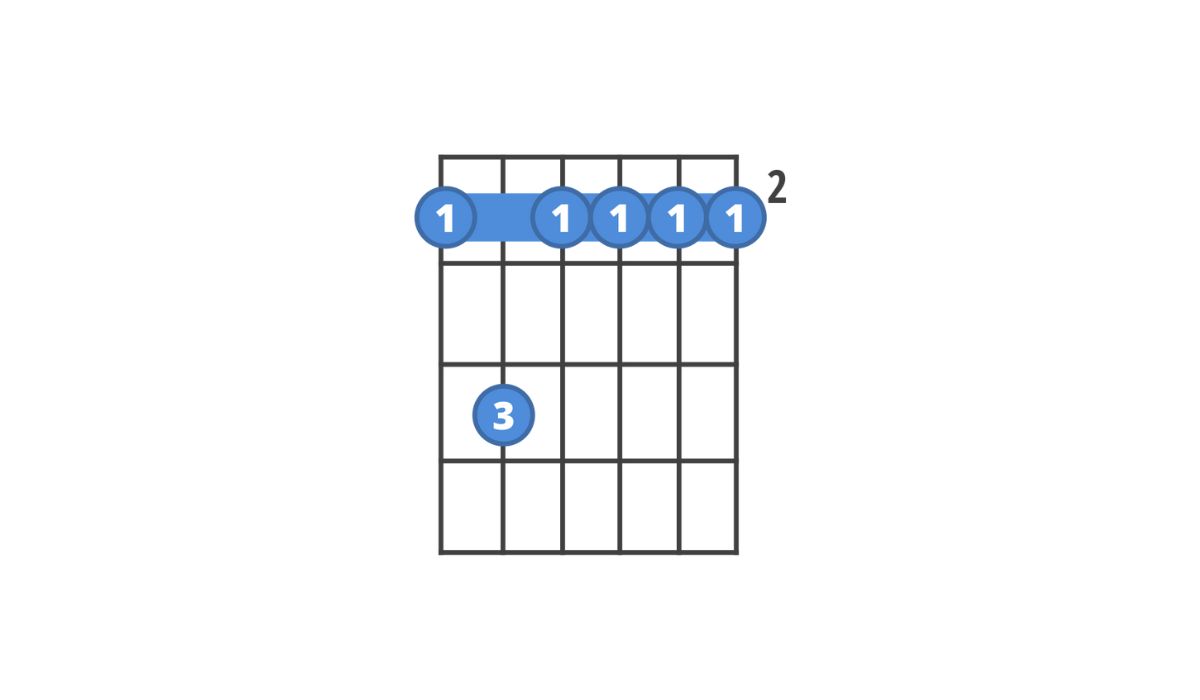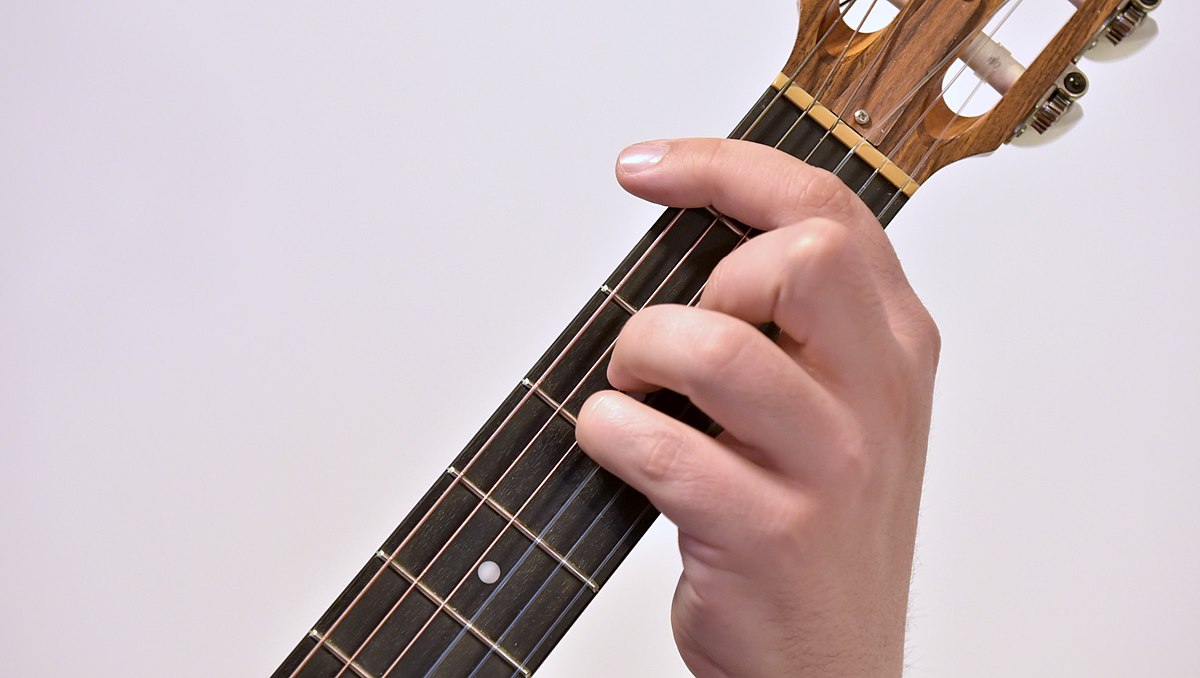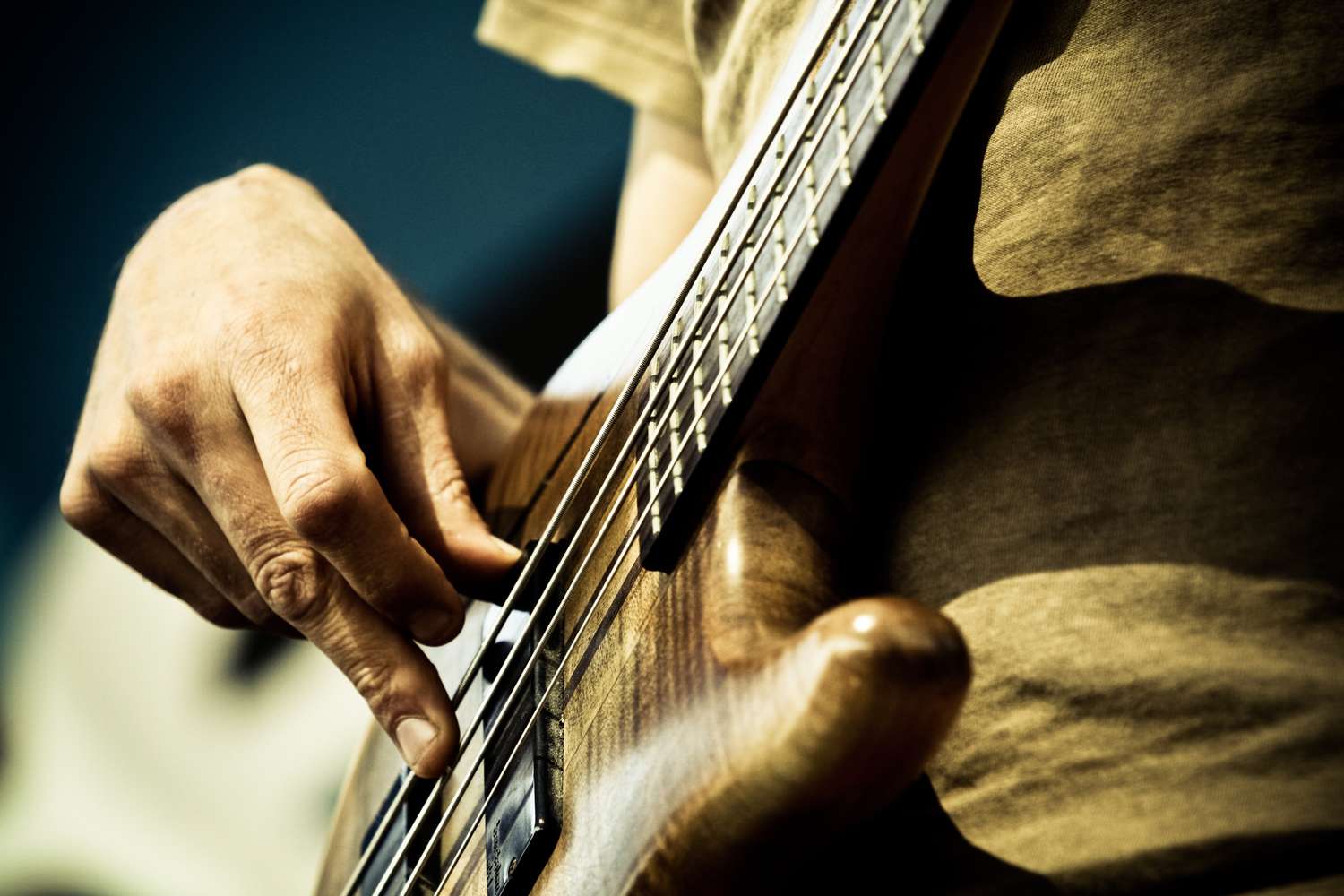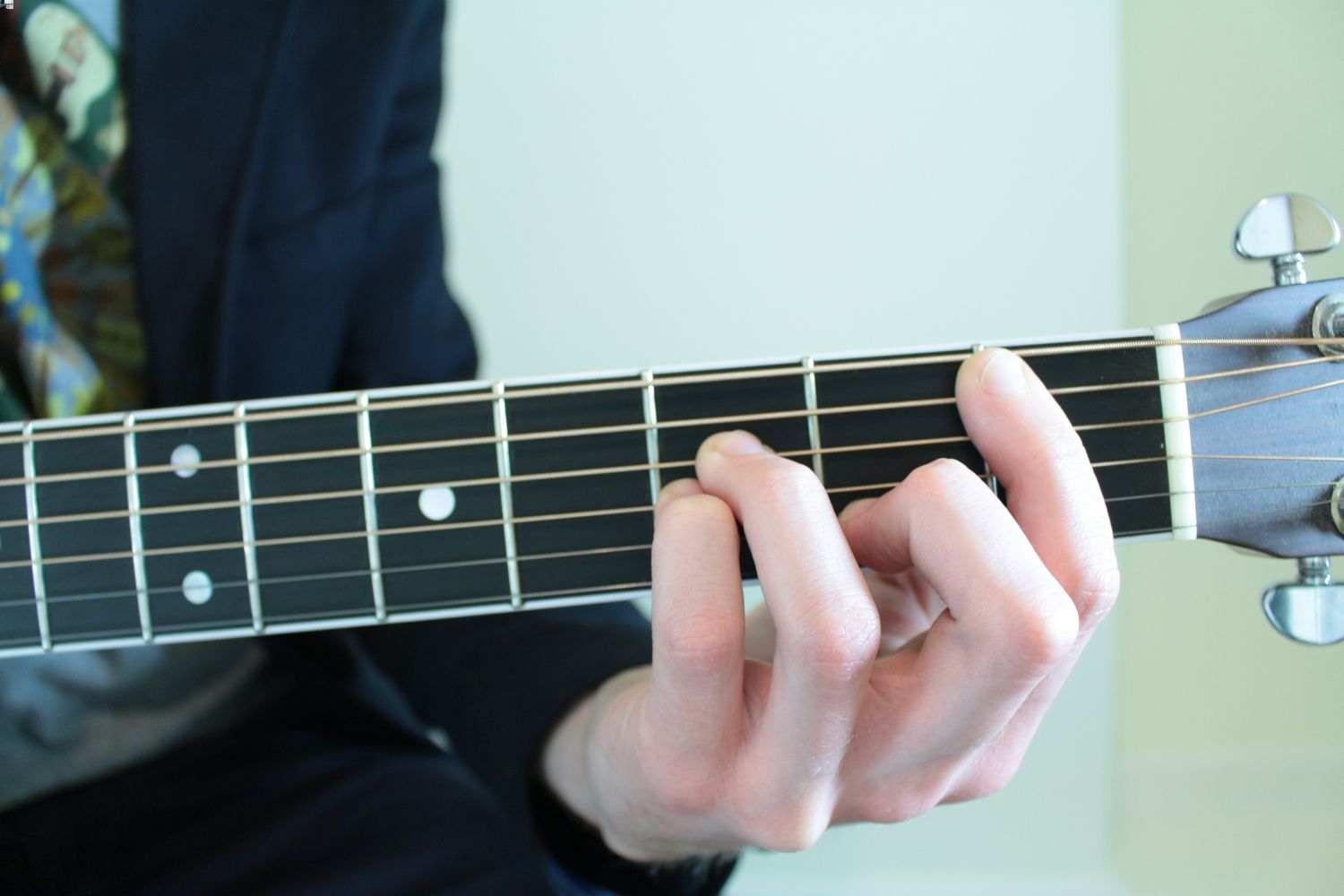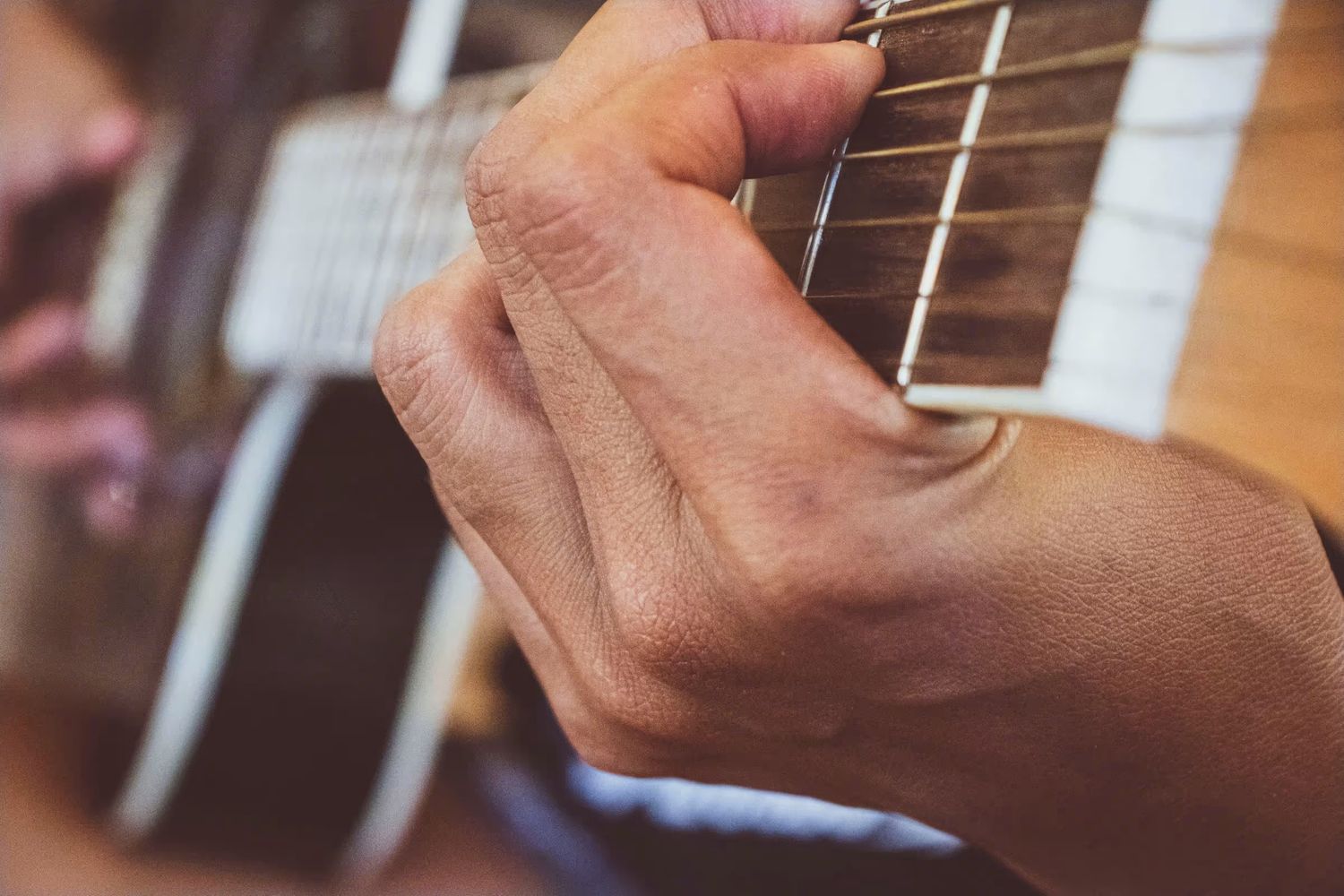Home>Instruments>Guitar>How To Play A7 Chord On Guitar


Guitar
How To Play A7 Chord On Guitar
Published: February 13, 2024
Learn how to play the A7 chord on guitar with our step-by-step guide. Master the essential guitar chords and improve your playing skills today!
(Many of the links in this article redirect to a specific reviewed product. Your purchase of these products through affiliate links helps to generate commission for AudioLover.com, at no extra cost. Learn more)
Table of Contents
Introduction
So, you've been learning the guitar and you're ready to take your skills to the next level. One essential chord that every guitarist should have in their arsenal is the A7 chord. Mastering the A7 chord opens up a world of musical possibilities, allowing you to play a wide range of songs across various genres. Whether you're into folk, blues, rock, or jazz, the A7 chord will undoubtedly find its way into your repertoire.
The A7 chord is a staple in the guitarist's toolkit, adding a touch of bluesy flair to your playing. It's a versatile chord that can be used as a substitute for the standard A major chord, injecting a hint of tension and character into your progressions. Understanding how to play the A7 chord effectively will not only expand your chord vocabulary but also enhance your overall playing style.
In this guide, we'll delve into the fundamentals of the A7 chord, covering everything from its composition to finger placement and strumming techniques. Whether you're a beginner looking to add new chords to your practice routine or an intermediate player aiming to refine your skills, this comprehensive tutorial will equip you with the knowledge and techniques needed to master the A7 chord.
So, grab your guitar, tune up, and let's embark on a musical journey to unravel the secrets of the A7 chord. Get ready to infuse your playing with a touch of sophistication and allure as you dive into the world of the A7 chord.
Understanding the A7 Chord
Before we dive into the practical aspects of playing the A7 chord, it’s essential to understand its theoretical foundation. The A7 chord, also known as A dominant 7, is a fundamental chord in music theory and is a common feature in countless songs. It is comprised of three essential notes: A, C#, and E, along with the dominant 7th note, G. This combination of notes gives the A7 chord its distinct sound, characterized by a blend of warmth and tension.
The A7 chord’s composition can be broken down as follows:
- The root note, A, serves as the foundation of the chord, providing a stable and grounding tonal center.
- The major third, C#, adds a sense of brightness and consonance to the chord, contributing to its overall harmonic richness.
- The perfect fifth, E, reinforces the chord’s tonality, adding depth and stability to its sound.
- The dominant 7th, G, introduces a touch of dissonance, creating a sense of tension that resolves beautifully when transitioning to other chords.
Understanding the intervals within the A7 chord is crucial for grasping its distinct tonal characteristics. The juxtaposition of the major third and dominant 7th creates a captivating blend of consonance and dissonance, making the A7 chord a compelling element in harmonic progressions.
When incorporated into chord progressions, the A7 chord introduces a sense of movement and color, making it a versatile tool for crafting dynamic and expressive musical passages. Whether used as a standalone chord or as part of a sequence, the A7 chord adds depth and dimension to your playing, elevating the emotional impact of the music.
By understanding the theoretical underpinnings of the A7 chord, you gain insight into its role in shaping the mood and texture of a musical piece. This knowledge forms the groundwork for effectively integrating the A7 chord into your playing, allowing you to harness its expressive potential to the fullest.
Finger Placement for A7 Chord
Now that we’ve explored the theoretical aspects of the A7 chord, let’s shift our focus to the practical side of things. Mastering the finger placement for the A7 chord is essential for achieving a clean and resonant sound. The A7 chord is a relatively beginner-friendly chord, and with the right finger positioning, you’ll be able to execute it with ease and precision.
To play the A7 chord, follow these steps:
- Begin by placing your index finger on the 4th string, 2nd fret. This fretting position corresponds to the note A, the root of the A7 chord.
- Next, position your middle finger on the 2nd string, 2nd fret, which corresponds to the note C#, the major third of the chord.
- Finally, place your ring finger on the 3rd string, 2nd fret, representing the note G, the dominant 7th interval in the A7 chord.
When executing the finger placement for the A7 chord, ensure that your fingers are positioned close to the frets to minimize buzzing or muted notes. Additionally, maintain a relaxed curvature in your fingers to facilitate clean string contact and prevent unintentional dampening of adjacent strings.
It’s important to note that the A7 chord can also be played using a different finger arrangement, particularly for individuals with varying hand sizes or preferences. Some guitarists may find it more comfortable to use their pinky finger to fret the 3rd string, 2nd fret, instead of the ring finger. Ultimately, the most effective finger placement is one that allows for clear and sustained notes without causing strain or discomfort.
As you familiarize yourself with the finger placement for the A7 chord, take the time to practice transitioning to and from other chords, as seamless chord changes are a hallmark of proficient guitar playing. By honing your muscle memory and finger dexterity, you’ll be able to execute the A7 chord effortlessly, paving the way for fluid and captivating musical performances.
With consistent practice and attention to proper finger placement, you’ll soon find yourself navigating the A7 chord with confidence and finesse, unlocking its expressive potential within your musical endeavors.
Strumming the A7 Chord
Now that you’ve mastered the finger placement for the A7 chord, it’s time to delve into the art of strumming. The way you strum the A7 chord can significantly influence its tonal quality and overall impact within a musical piece. Whether you’re aiming for a laid-back, bluesy vibe or a lively, rhythmic feel, refining your strumming technique is essential for bringing out the best in the A7 chord.
When strumming the A7 chord, consider the following tips:
- Strumming Pattern: Experiment with different strumming patterns to find one that complements the mood of the music. For a relaxed, bluesy feel, a simple downstroke strumming pattern can work wonders. Alternatively, incorporating upstrokes and syncopated rhythms can infuse the A7 chord with a dynamic and engaging quality.
- Strumming Dynamics: Pay attention to the dynamics of your strumming. Varying the intensity and speed of your strumming can add depth and emotion to the A7 chord, allowing you to convey a range of feelings through your playing.
- Muting Unwanted Strings: Be mindful of muting any unwanted strings to ensure that only the notes comprising the A7 chord are sounded. This can be achieved by using the underside of your fretting fingers to lightly touch and dampen extraneous strings, resulting in a cleaner and more focused sound.
- Embellishments: Explore embellishments such as hammer-ons, pull-offs, and slides to add flair and expression to your A7 chord playing. These embellishments can inject personality into your chord progressions, elevating them from simple accompaniments to captivating musical statements.
As you experiment with different strumming techniques and patterns, listen attentively to the nuances of the A7 chord’s sound. Paying close attention to the tonal variations that arise from subtle changes in your strumming approach will deepen your understanding of how to harness the chord’s expressive potential.
Furthermore, don’t hesitate to incorporate pauses and rests into your strumming patterns, as these silences can be just as impactful as the notes themselves. Strategic use of silence can create tension and anticipation, adding a layer of intrigue to your chord progressions and enhancing the musical narrative.
Ultimately, strumming the A7 chord is an opportunity to infuse your playing with personality and emotion. Whether you’re aiming for a soulful, introspective ambiance or a lively, upbeat groove, your strumming technique plays a pivotal role in shaping the character of the A7 chord within your musical repertoire.
Practice Tips
Mastering the A7 chord, like any aspect of guitar playing, requires consistent practice and focused effort. To refine your skills and integrate the A7 chord seamlessly into your playing, consider the following practice tips:
- Isolated Chord Practice: Dedicate specific practice sessions to the A7 chord, focusing on achieving clean and clear notes without extraneous buzzing or muted strings. Practice transitioning to and from the A7 chord from various other chords to build muscle memory and agility.
- Rhythmic Exercises: Incorporate rhythmic exercises into your practice routine to enhance your strumming precision and timing. Utilize metronomes or drum tracks to develop a strong sense of rhythm and groove when playing the A7 chord within musical contexts.
- Chord Progression Exploration: Experiment with different chord progressions that feature the A7 chord, allowing you to understand its role in shaping musical sequences. Explore how the A7 chord interacts with other chords and how it contributes to the overall harmonic landscape.
- Ear Training: Train your ear to recognize the distinct sound of the A7 chord within songs across various genres. Actively listen to music and identify instances where the A7 chord is employed, honing your ability to incorporate it effectively into your own playing.
- Dynamic Playing: Practice playing the A7 chord with varying dynamics, exploring both gentle, subdued strumming and more assertive, energetic strumming. Developing control over the dynamics of the chord enhances your expressive capabilities as a guitarist.
- Performance Integration: Incorporate the A7 chord into your practice performances, whether playing along with backing tracks, jamming with other musicians, or performing for an audience. Embracing real-world performance scenarios can fortify your confidence in utilizing the A7 chord within musical contexts.
Remember that progress takes time and patience, so approach your practice sessions with a positive and determined mindset. Celebrate each improvement, no matter how small, and stay committed to your musical journey. With consistent practice and a willingness to explore the nuances of the A7 chord, you’ll gradually unlock its potential as a versatile and expressive element in your guitar playing.
Conclusion
Congratulations on delving into the intricacies of the A7 chord and its role in the guitarist’s repertoire. Throughout this guide, we’ve explored the theoretical foundations of the A7 chord, delving into its composition and the unique blend of intervals that define its captivating sound. Understanding the theoretical underpinnings of the A7 chord provides a solid foundation for integrating it effectively into your playing, allowing you to harness its expressive potential to the fullest.
We’ve also delved into the practical aspects of playing the A7 chord, from mastering the finger placement to refining your strumming technique. By honing your finger dexterity and exploring various strumming patterns, you’ll be able to infuse the A7 chord with personality and emotion, shaping its tonal quality to suit a diverse range of musical styles and moods.
As you continue your musical journey, remember that proficiency with the A7 chord, like any musical skill, is cultivated through dedicated practice and a spirit of exploration. Embrace the nuances of the A7 chord, experiment with different musical contexts, and allow its expressive potential to enrich your playing and musical compositions.
Whether you’re drawn to the soulful allure of blues, the rhythmic pulse of jazz, or the raw energy of rock, the A7 chord stands as a versatile and indispensable tool in your musical arsenal. Its ability to infuse tension, movement, and character into your chord progressions makes it a valuable asset for any guitarist seeking to expand their sonic palette and creative horizons.
As you embark on your practice sessions and musical endeavors, carry with you the knowledge and techniques gleaned from this guide. Approach the A7 chord with curiosity and an open mind, and allow its evocative qualities to inspire and elevate your guitar playing. With dedication, patience, and a touch of creativity, the A7 chord will become a cherished companion in your musical expression, enriching your playing and captivating audiences with its timeless allure.

